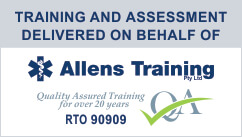Snake Bite Treatment – great video!
This is Simple Instruction’s last post for 2010. I hope the people on the Northern Beaches who have supported me this year and in fact everybody has a great 2011. I hope everyone stays safe and has a happy and fun time for New Years.
Apply First Aid (formerly called Senior First Aid) and Perform CPR course dates for the Brookvale Hotel have now been posted for 2011. Please check the website and book into a course soon.
Simple Instruction looks forward to your continued support in 2011. Thanks again ——-Ian Wood
Post update – 12/10/2023
As another year comes into the Hot weather month it is important to keep an eye on snake bites and how to treat them.
Each year, approximately 3000 snake bites occur in Australia, as per the “Snakebite Project” conducted from 2005 to 2015. Surprisingly, most snake bites happen close to homes and major cities, rather than in remote areas. This highlights the importance of being prepared for snake encounters no matter where you are.
Preventing Snake Bites and Treatment
Preventing snake bites is the first line of defence. Here are some tips to help you reduce the risk of encountering snakes:
- Awareness: Understand that snakes share their habitat with humans, even in suburban, city, and rural areas.
- Protective Clothing: When hiking or working in snake-prone areas, wear protective clothing, including boots and long trousers.
- Check Before Reaching: Avoid reaching into holes, under rocks, or bushes without checking for snakes.
- No Snake Charming: Never touch or provoke snakes, whether they are alive or dead.
- Camping Precautions: If you go camping, keep your campsite clean and free of rubbish, which may attract snakes. Store food securely to avoid attracting them.
Recognising Snake Bites
If, despite precautions, you find yourself bitten by a snake, it’s vital to recognise the symptoms of a snake bite:
- Pain and Swelling: Expect pain and swelling around the bite area.
- Nausea and Vomiting: Nausea and vomiting can occur.
- Cardiovascular Effects: Rapid or irregular heartbeat may develop.
- Other Symptoms: You might experience sweating, fainting, blurred vision, or difficulty speaking.
In severe cases, snake bites can lead to muscle paralysis, breathing difficulties, or even death.
First Aid for Snake Bite Treatment
Providing immediate first aid for snake bite and treating them is crucial. Follow these steps:
- Call for Help: Dial emergency services at 000.
- Immobilise the Limb: Get the victim to sit or lie down. Immobilise the affected limb with a broad pressure bandage, wrapping it over the bite location. Use elasticised bandages if available. Be firm but ensure that you don’t restrict blood circulation.
- Additional Bandage: For further immobilisation, wrap a second bandage along the entire length of the limb, starting from the toes or fingertips. The goal is to minimise the spread of venom within the lymphatic system.
- Splint the Limb: Keep the limb as motionless as possible using a splint.
- CPR: If necessary, commence CPR.
It’s essential to seek medical attention promptly, even if the bite doesn’t appear severe. Some snake bites may not immediately manifest severe symptoms but can worsen without proper treatment.
Different Types of Snake Bites
There are two types of snake bites and treatment varies:
- Dry Bites: In dry bites, the snake strikes but doesn’t release venom. Despite not envenomating, dry bites are painful and cause swelling and redness. Seek medical attention to confirm that the bite is dry.
- Venomous Bites: Venomous bites involve the release of venom. Venomous snake bites exhibit severe pain, swelling, and other symptoms. It is vital to take these bites seriously.
Common Venomous Snakes in Australia
Approximately 4 out of every 10 snake bites in Australia are attributed to brown snakes. Although about 100 Australian snake species are venomous, only 12 pose a significant threat to humans. Australia is home to approximately 140 land snake species and 32 sea snake species.
Preventing Snake Bites
The best way to prevent snake bites is to avoid provoking or cornering snakes. Follow these additional precautions:
- Move away calmly if you encounter a snake. Give it space to retreat.
- When walking in the bush, especially at night, be cautious about where you place your hands and feet.
- Use a torch at night in snake-prone areas.
- Make noise by stomping your feet while walking in the bush to alert any snakes to your presence.
- Wear thick clothing, such as jeans and boots, for added protection.
While not all Australian snakes are venomous, it’s wise to adopt basic first aid techniques and always be prepared for a potential snake encounter.
In summary, understanding how to prevent snake bites, recognising their symptoms, and providing immediate first aid are essential for staying safe when exploring Australia’s diverse landscapes. Whether you’re a resident or a visitor, knowing how to deal with snake bites is a valuable skill that can make a significant difference in an emergency. Book in a First Aid course with Simple Instruction and be prepared if a snake bit was to occur.
